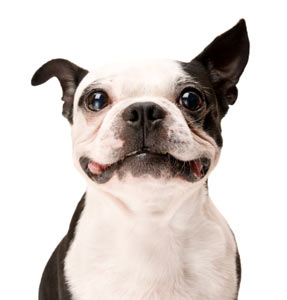Clicker Training for Dogs: An Overview

Clicker training for dogs has become a highly popular means of training using positive reinforcement. Essentially, when a dog performs something that you desire, you mark that exact moment by making a unique sound - a click, and follow the sound by giving a reward.
This type of training bridges the communication gap between you and your dog, teaching him more about his environment and what is expected of him. Clicker training teaches your dog how to learn, not just how to react, as often occurs with most traditional training methods.
Why Does Clicker Training for Dogs Work?
All animals will repeat behaviors that have proven to be rewarding in the past. For example, if a dog finds food on the counter, he will continually jump onto the counter to seek more food. If you give your dog attention when he jumps on you, he will continue to jump on you.
When you pair a unique sound, the click, with something that your dog enjoys, such as a treat, he will strive to repeat the action that was rewarded. Clicker training helps dogs become aware of what they are learning. This awareness helps them remember it far better as well. Many dogs recall the appropriate response to a cue throughout their lives, as it was a rewarding experience.
Getting Started with Clicker Training
The first thing your dog needs to learn is that the sound of the clicker (or another unique sound that you're using) is rewarding. Therefore, you need to pair the sound with a reward. If your dog prefers a specific treat, use that. Should he prefer a certain toy instead, offer that with the click. Be certain to offer the reward together with the sound. Once your dog gives you his undivided attention when he hears that sound, he is ready to be clicker trained.
Facilitate Learning Through Clicker Training
There are many ways to use clicker training with your dog. If you are patient and observant, you can wait for your dog to accidentally perform something that you wish him to eventually learn to do on cue. It may take many repetitions before he realizes what he did to earn the click, but it will be something he figured out on his own, never having been forced to do the behavior.
To speed up the process, you can facilitate the behavior using a reward to lure him into the desired position. Once the position is attained, you click and reward. Within a few repetitions, your dog will understand what you want and perform the action because he knows he will be rewarded. Pairing luring with clicker training greatly speeds up the training process and maintains the positive approach to teaching your dog.
You can even use clicker training to rid your dog of a behavior that you don't like. This is done by teaching your dog an alternate behavior and not reinforcing the bad behavior. For example, if your dog loves to jump on you, simply stop rewarding him for doing it with attention of any sort. This includes allowing him to land on you. Step away when he tries to jump on you. Next, lure him into a sitting position using a treat, then click and reward him when he achieves that position. Be consistent.
Clicker training can be used to train your dog to do as many things as you can think up to teach him. And the best part? It is fun for you AND your dog.
You May Also Like These Articles:
Disclaimer: This website is not intended to replace professional consultation, diagnosis, or treatment by a licensed veterinarian. If you require any veterinary related advice, contact your veterinarian promptly. Information at DogHealth.com is exclusively of a general reference nature. Do not disregard veterinary advice or delay treatment as a result of accessing information at this site. Just Answer is an external service not affiliated with DogHealth.com.
Notice: Ask-a-Vet is an affiliated service for those who wish to speak with a veterinary professional about their pet's specific condition. Initially, a bot will ask questions to determine the general nature of your concern. Then, you will be transferred to a human. There is a charge for the service if you choose to connect to a veterinarian. Ask-a-Vet is not manned by the staff or owners of DogHealth.com, and the advice given should not delay or replace a visit to your veterinarian.



